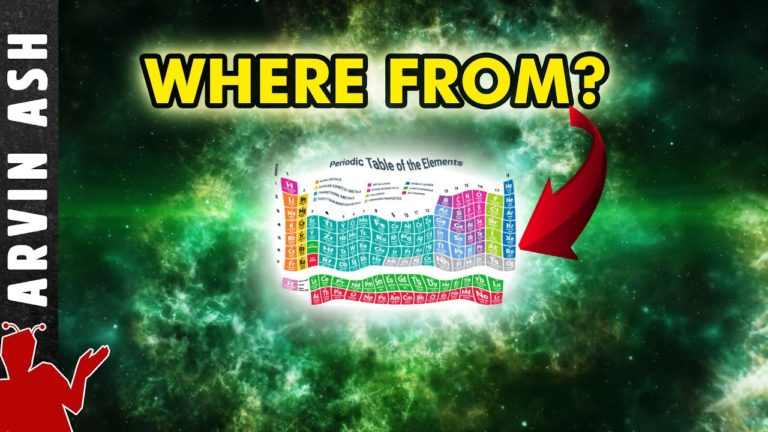Where do All Elements Found on Earth Come From?
The universe, shortly after the big bang only consisted of the lightest elements, Hydrogen, Helium Lithium, and some isotopes. But today we have elements on earth as heavy as Californium, element 98 on the periodic table. Where did all these elements on earth come from?
The nuclei of the lightest elements first came from the first minutes of the big bang, when nucleosynthesis occurred. After 380,000 years, the universe cooled down enough to produce neutral stars.
Later as hydrogen gas condensed into the first stars, the universe came out of the dark ages, as these stars began to shine. Stars shine thanks to a process called fusion. In the first stars this happened when hydrogen atoms combined to form helium atoms in the core of stars, where temperatures and pressures are high enough to initiate fusion. This process releases heat and light.
The process happens something like this: You start with 4 hydrogens atoms. You can fuse the two pairs of hydrogen atoms into two deuterium atoms, as two protons can transmute into Neutrons. Then you can borrow two more protons to make two helium-3 atoms. These can then fuse to make a helium-4 atom and two free protons. Energy is also released in this process.
You can continue this fusion process to make heavier and heavier atoms. But stars like our sun can continue this fusion process up until elements like carbon, or nitrogen because they don’t can’t produce the temperatures and pressure for further fusion.
But large stars can produce elements up to iron. Iron has the largest nuclear binding energy or all elements – it has the most stable nucleus. So, the fusion process stops at iron, and the bigger stars also die.
Where do the heaviest elements larger than iron come from? When a very massive star dies, they explode in a supernova. Elements beyond iron are not usually produced in the core of stars, but are formed in this explosion. The extreme temperatures in a supernova can reach billions of degrees. This drives additional nucleosynthesis of elements heavier than iron, yielding elements all the way to Zirconium, element 40.
Where do element beyond Zirconium come from? Although the sun doesn’t produce elements much heavier than Nitrogen, it CONTAINS heavier elements even up top iron because these were present in the original gases that formed it. When free neutrons merge with heavy elements, they produce an even heavier isotope of the element. Then over time, due to the weak force, some of the neutrons transmute into protons inside the nucleus creating heavier elements. This way, Iron turns into Cobalt, then Nickel, and so forth, all the way to bismuth, element 83.
Heavier elements than this can be produced when the core of a supernovae, called neutron stars merge. When two neutron stars merge, they can free up a lot of neutrons which can get absorbed by heavy atoms. And over time these heavier elements become even heavier as some of the neutrons transmute into protons. This can produce elements all the way to plutonium, element 94.
Elements heavier than Plutonium only have very unstable isotopes. So, we find them typically only around radioactive sources., in very minute amounts as elements like uranium absorbs neutrons. These neutrons transmute to produce isotopes of heavier elements.
The remaining 20 heaviest elements from 99 to 118 on the periodic table are man made. They do not occur naturally and are highly unstable lasting sometimes only fractions of a second.
Three elements – boron, beryllium, and some lithium are not produced by any of these mechanisms, but from fission due to cosmic rays. 98% of the visible matter in the universe is made of only Hydrogen and Helium. The remaining 96 natural elements make up only 2% of the remaining. Most of the atoms in our bodies and on earth, like carbon, nitrogen, and oxygen are part of this tiny 2%.
Do not forget to share your opinion with us to provide you with the best posts !




0 Comments